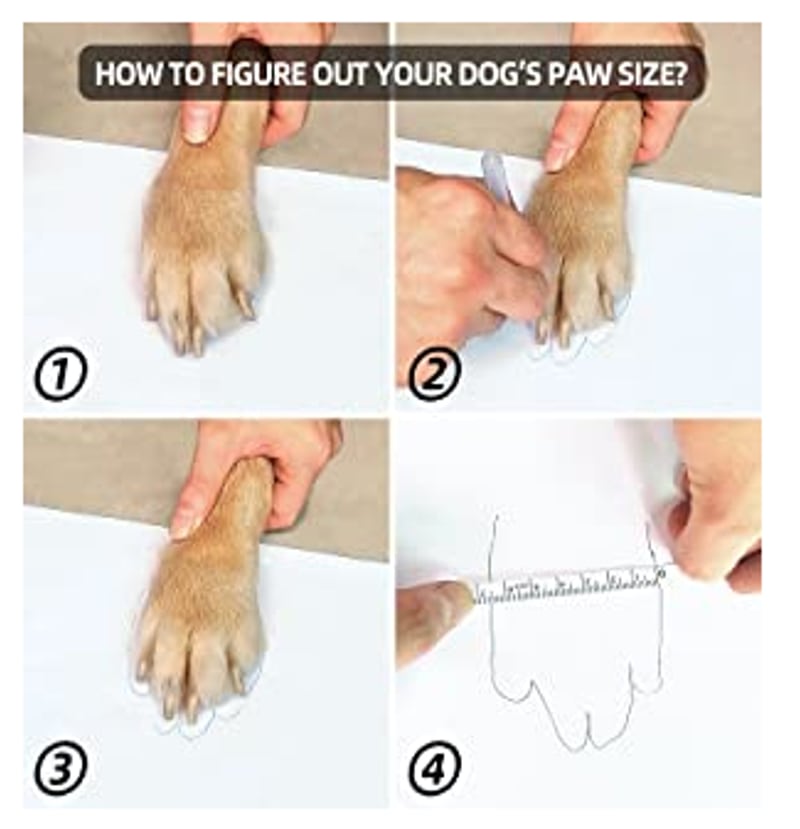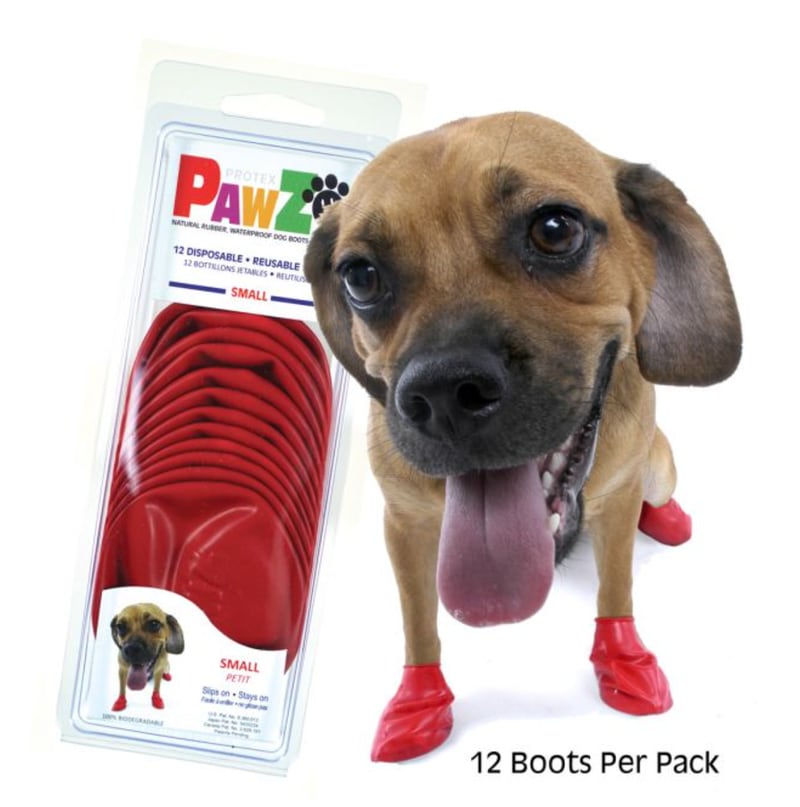Hot asphalt or sand can present a challenge for your pet. Do dog shoes help prevent this? Three veterinarians give their verdict.
Have you walked barefoot on outdoor ground on a hot day? You have probably felt a burning sensation penetrating the soles of your feet. Well, imagine how a dog might feel walking on the sidewalk during those hours.
Taking care of your dog’s paws during the summer is part of the responsibilities that guardians must have during this season, since it is not only an action that guarantees comfortable and safe walks, but also contributes to the general well-being of the animals.
“Yes, hot pavement can cause injuries to dogs’ paws, such as wounds, blisters and even burns,” explains Sebastián Oyaneder, veterinarian and Ludipek sales representative.
“There are dogs who have greater sensitivity in the footpads and who are injured more easily than others,” adds Paola Mujica, academic at the School of Veterinary Medicine at the University of Las Américas. “Rubbing against a hot surface can damage your pads, so it’s best to avoid exposure,” he says.
Are dog shoes useful?
It has been a long time since it was so rare to see dogs wearing shoes on the street while walking. The question is: do they really work in this context?
According to Mujica, this can only be beneficial if the animal is very sensitive to contact with a hot surface or if it is a working dog. “They sometimes have to carry out search and/or rescue work on hot or dangerous surfaces, and there is no escaping that.”
However, more than whether or not to use these shoes, they suggest avoiding the animal from walking on very hot surfaces and always favoring grassy or damp paths.
“Only if there is no possibility that the walk will not take place on a surface other than hot cement, shoes can be used, but hopefully it will be a short walk and without physical activity”, analyzes Mujica. Indeed, dogs lose temperature through their paws, “which have glands that dissipate heat in this area,” he explains. If they are covered for too long, the animal could have difficulty regulating its internal heat.
“There are different brands and types of shoes on the market and, in general, they all perform the function of protecting the pads of the feet from heat and friction in extreme conditions,” he explains. If it’s a very sensitive animal or one that can’t avoid exposure, “shoes should be chosen based on the size of the animal’s paws and hopefully demonstrate that it feels comfortable walking in it.
“Dog shoes should be breathable, waterproof, non-slip and the right size for the dog,” adds Oyaneder.
How to measure a dog’s paw?
The important thing here is to know the length of the paw from the back of the base pad to the tip of the toenails. The width, on the other hand, extends from the outer edge of each of the outer pads.
- Have your dog stand on white or light-colored paper.
- Lift the dog’s opposite leg, so that he places all his weight on the leg we want to measure.
- Using a pencil, mark both sides of the widest part of the leg.
- Measure the distance and choose the correct size by consulting the reference table. Normally, each boot will have a separate size chart.

Mujica insists that this product should only be used during short walks, as it is never advisable to expose dogs to high temperatures, even if they are wearing shoes or clothing that promotes temperature regulation. temperature.
There is also another important point: inappropriate shoes – too tight or too loose – can cause paw injuries, make breathing difficult, cause friction or irritation, limit the dog’s contact with the ground and generate rejection. or discomfort.
If it becomes very necessary, Oyaneder explains that it is important that the dog can adapt gradually and always check its paws after each use. “Dog shoes can be an option to prevent injuries from hot pavement, but it is not the only or most recommended option,” he rocks.
“You should also hydrate the dog frequently and watch out for signs of possible heat stroke. And if the dog already has injured paws, you must consult the veterinarian and provide the necessary care,” he adds.
The best solution: take a walk in the cool hours
On days when temperatures are high – that is to say above 28°C – it is necessary to adjust the dog’s walking times. The ideal is to do it when the ambient temperature does not exceed 25 degrees, especially if the dogs are puppies, brachiocephalic and/or very active, as they are more sensitive to the effect of high temperatures.
In this way we avoid exposing them to hot ground and excessive ambient temperatures that they are not able to tolerate.
“When a dog’s body temperature rises above what is tolerable (plus 41 degrees), its thermoregulatory mechanisms – panting or heat loss through the pads of the feet – are not sufficient to maintain balance of functions bodily. It is very risky, because all the animal’s organs are affected, a dysfunction is generated in the central nervous system and thermal shock can occur, fatal in around 50% of cases,” explains Mujica.
“It can also lead to serious consequences, such as respiratory, vascular or hemorrhagic problems,” emphasizes Daniela Medone, veterinary doctor. and also representative of Ludipek. Brachiocephalic breeds – with flat noses like bulldogs or pugs – require exhaustive care, “because due to their anatomical structure, they are more likely to generate respiratory problems”.
Therefore, during summer walks it is essential to provide water during the journey, avoid small spaces, guarantee shade and avoid, if possible, cement which retains heat. For snacking, one option on hot days is to freeze toys or offer high-water prizes, like churu. “They can be frozen and offered like ice cream,” says the veterinarian.
Latest recommendations
If your dog must wear shoes, either to avoid heat or due to the sensitivity of their paws, Mujica says it’s important to check that the product and its pads are in optimal condition. “There should be no harshness,” he says. “You should never wear broken shoes or if there are injuries to the animal’s paws,” he says. And let’s repeat: the amount of time a dog must wear shoes should always be minimized unless medically indicated.
Regarding heat stroke, one of the big problems that can arise during this summer season, Oyaneder suggests following the following tips focused on preventive actions:
- Do not leave the dog and/or cat inside the car, even with the windows down or in the shade. The temperature inside can rise quickly and cause heatstroke within minutes.
- Avoid walking the dog during the hottest hours, especially between 11 a.m. and 7 p.m. The ideal is to go out early in the morning or in the afternoon, when the sun is no longer as intense.
- Bring fresh water and a portable water bowl to hydrate the dog during the walk. You can also wet your head and back to lower your temperature.
- Protect the dog from the sun with a special sunscreen for dogs, especially if he has short or light hair. The protector should be applied to the most sensitive areas, such as the muzzle, ears and abdomen.
- Avoid letting your dog walk on hot surfaces, such as pavement or sand, as these can burn the pads. To do this, do the 5-second test: if you cannot keep your hand on the ground for 5 seconds, it means that it is also too hot for the dog.
As for the choice of shoes, in his experience Medone prefers those made of natural rubber, because not having padded soles, they provide a more natural walking feeling.
“I like the PAWS brand, which is biodegradable, reusable, water and heat resistant, easy to adapt and generates traction with the surface, which allows good adhesion,” he comments. They are available in seven sizes and different colors, from tiny (for dogs with paws up to 2.5 cm, such as Maltese, Yorkshire Terrier or Toy Poodle) up to XL (feet of 12 cm).
PawZ Rubber Boots Small

*Product prices in this article are current as of December 28, 2023. Values and availability are subject to change.
Source: Latercera
I am Robert Harris and I specialize in news media. My experience has been focused on sports journalism, particularly within the Rugby sector. I have written for various news websites in the past and currently work as an author for Athletistic, covering all things related to Rugby news.


